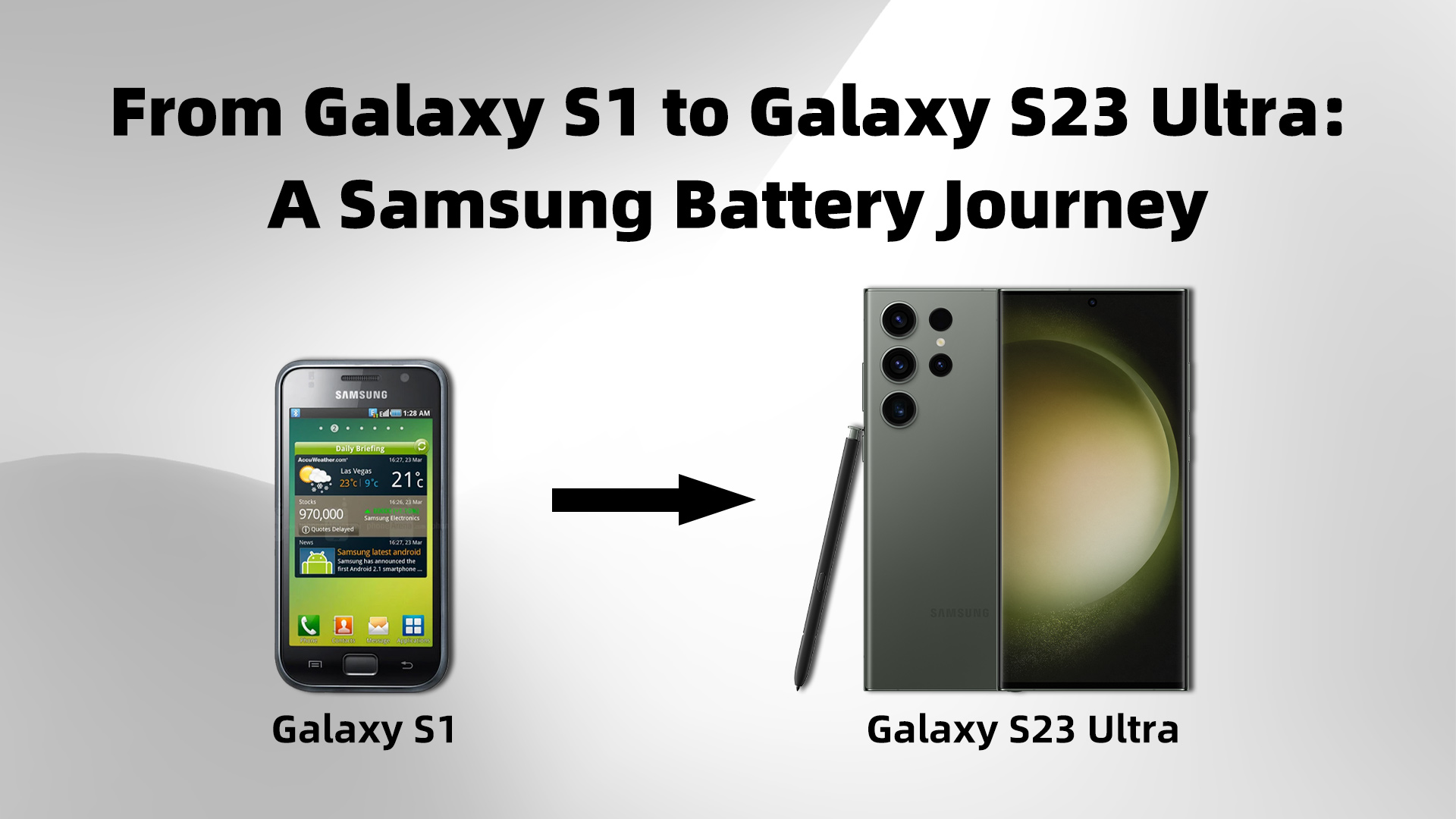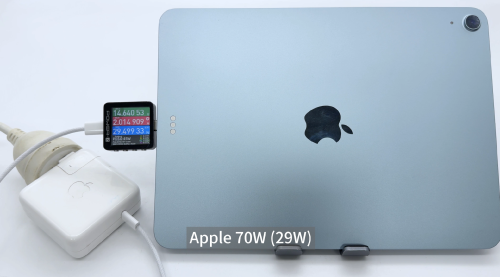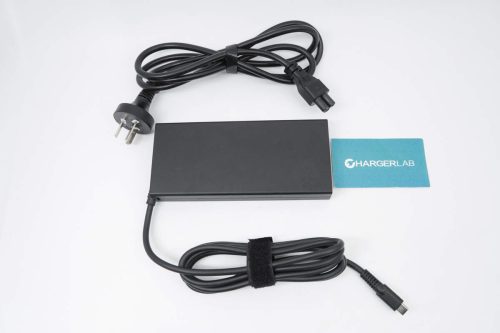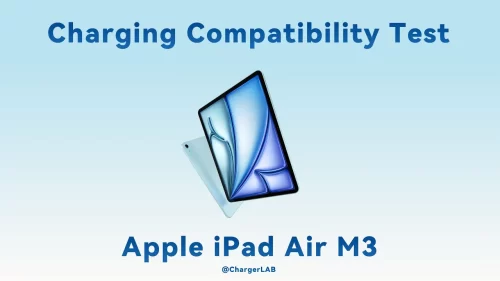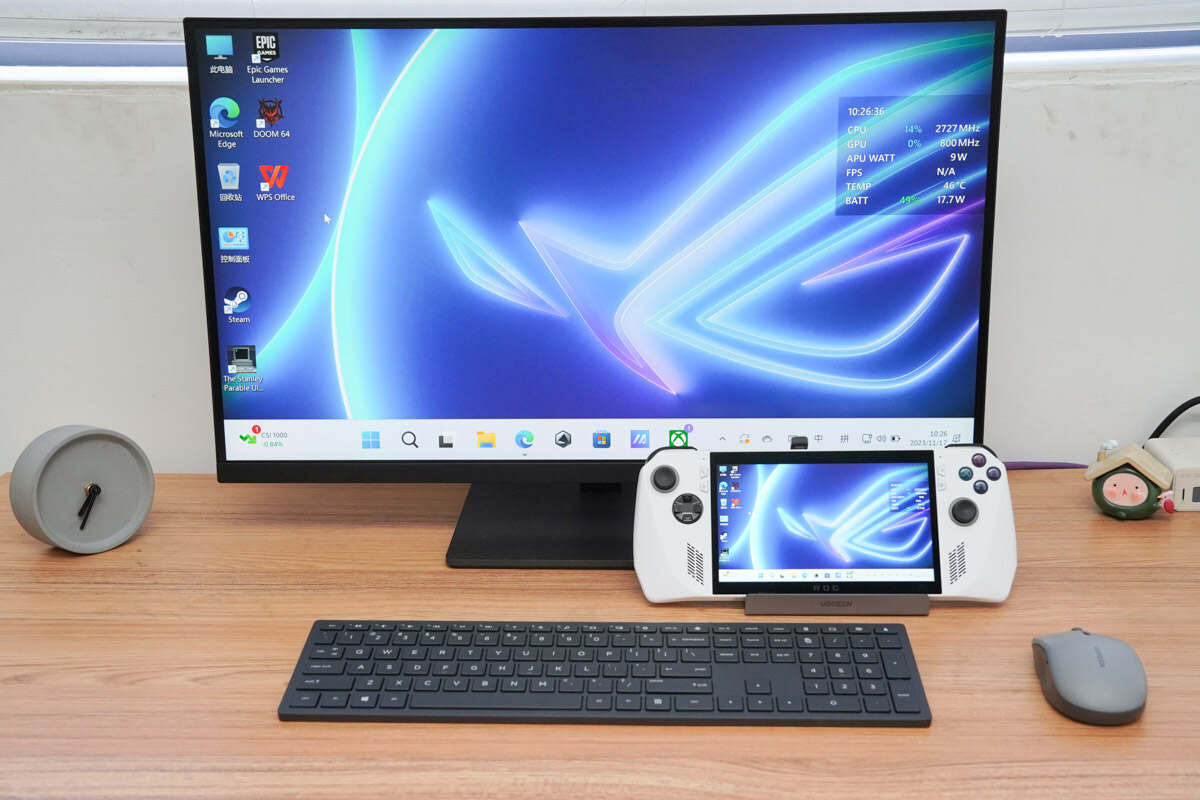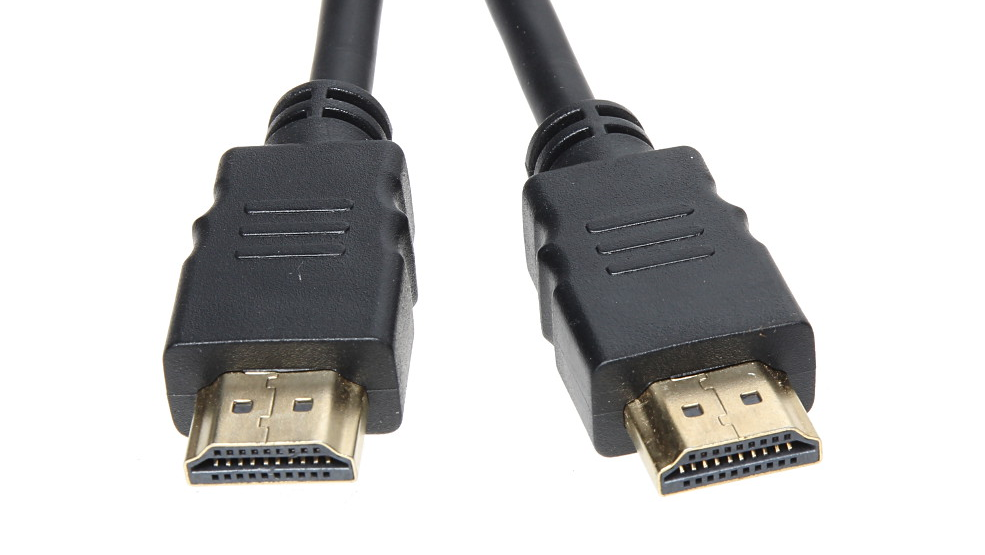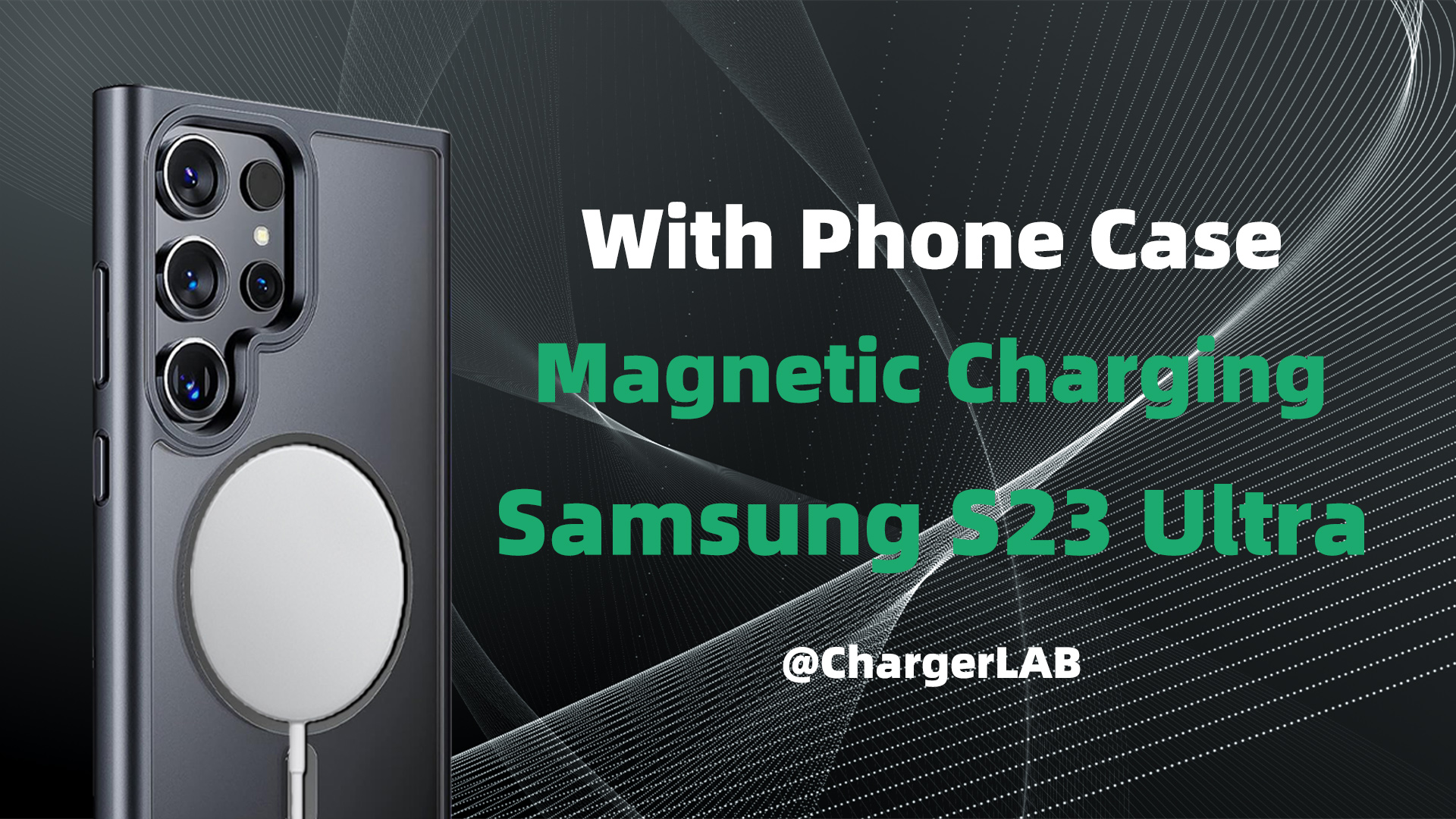Introduction
In our previous ChargerLAB article, we discussed the changes in battery capacity from the iPhone 2G to the iPhone 15 Pro Max. This time, our focus shifts to the Android side with a representative - Samsung, specifically the Galaxy S series.
Over the past 13 years since the launch of the first-generation Galaxy S in 2010, Samsung has introduced 13 updates and a total of 29 products within this series. Naturally, the battery capacity of these smartphones has undergone changes during this process. This article aims to provide a more detailed analysis with data charts to help you visually understand the changes in the Galaxy S series' batteries and key features.
The Legendary Beginning - Galaxy S
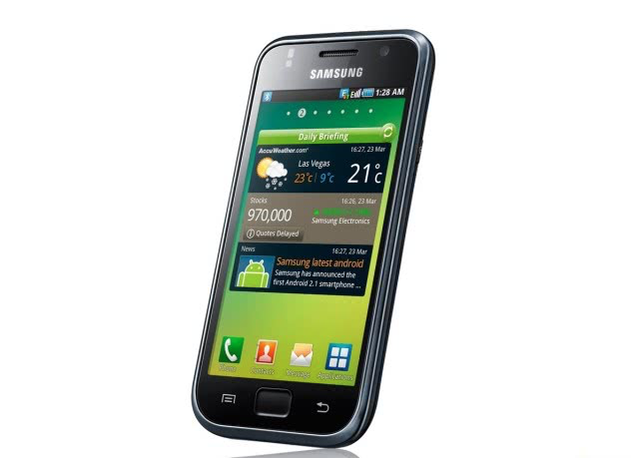
In March 2010, at a time when dumb phones were still dominant, Samsung released the first-generation Galaxy S smartphone. It featured a 4-inch AMOLED screen and could compete with the iPhone in terms of functionality. Additionally, it came with a removable 1500mAh battery. Due to the age of the device and the fact that people didn't pay much attention to charging speed back then, we can only gather from user tests on Reddit that it had a charging power of approximately 3.5W.
Bigger Screen - Galaxy S2
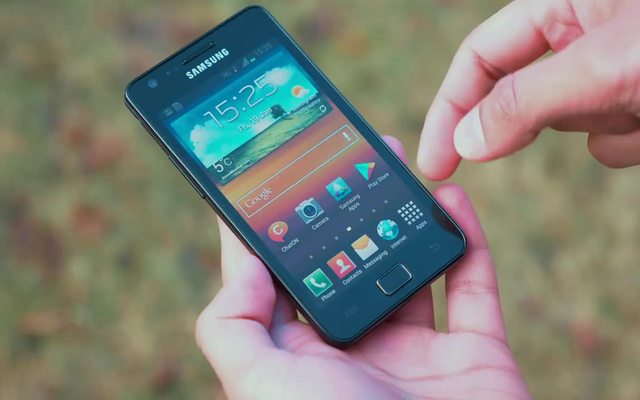
In July of the following year, Samsung launched the Galaxy S2. Its most significant upgrade was its 4.3-inch screen, and with that, the battery capacity increased to 1650mAh. However, the charging power remained the same at 3.5W.
Surging Sales - Galaxy S3
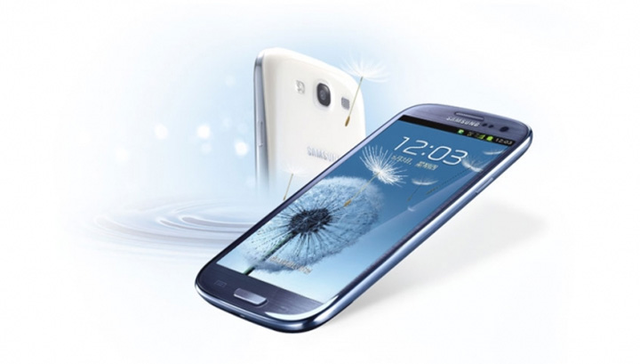
In May 2012, the Galaxy S3 was introduced. It further upgraded its screen to 4.8 inches and included a removable 2100mAh battery. The charging power improved to 5W. It's worth mentioning that it became the second-best selling model in the Galaxy S series.
Standard Upgrade - Galaxy S4
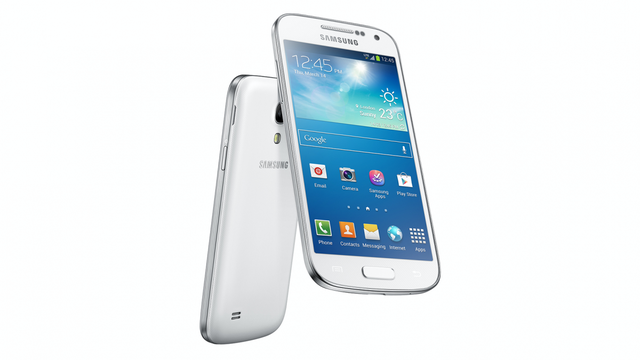
In May of the following year, the Galaxy S4 was released. The upgrades were minor, with just a 0.2-inch increase in screen size, a battery upgrade to 2600mAh, but the power once again increased, reaching 10W.
Fingerprint Recognition - Galaxy S5
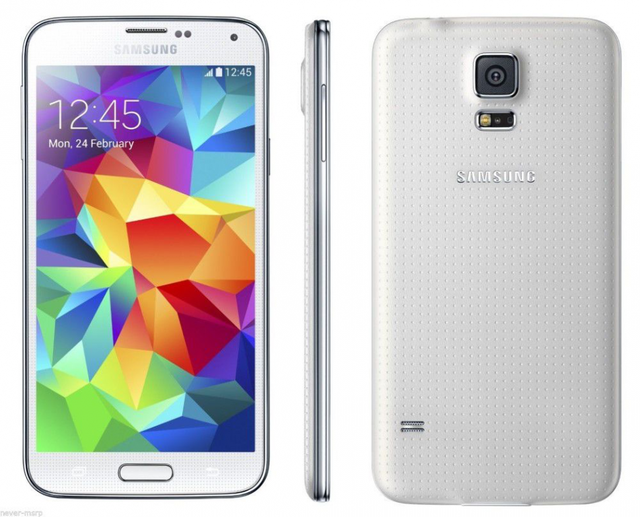
The Samsung Galaxy S5 was the first model in the series to support fingerprint recognition. It featured a built-in 2800mAh removable battery, and the charging speed remained at 10W, considered "fast charging" at the time.
Wireless Charging - Galaxy S6 Series
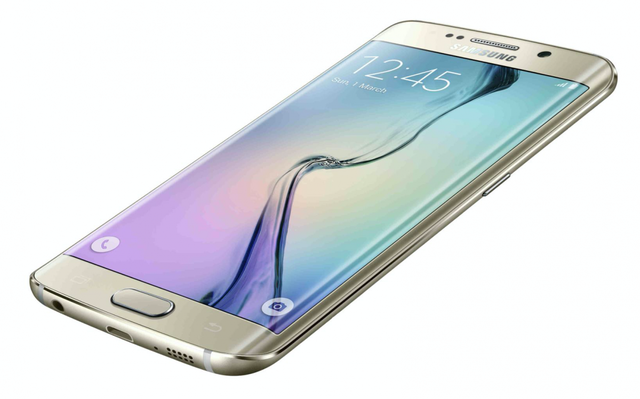
The S6 and S6 Edge released on march 2015 were the first in the series to ditch the plastic shell and removable battery that had been part of the previous five models. Both models' screens were upgraded to 2K resolution, with wired charging now at 15W and the introduction of 10W-level wireless charging features. It's worth noting that Apple didn't implement these two features until two years later with the iPhone 8 series. However, the battery capacity of the Galaxy S6 was reduced to 2550mAh, which is less than the previous generation.
Sales Champion - Galaxy S7 Series
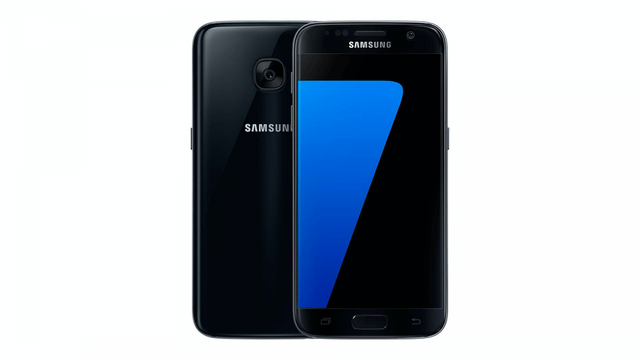
In the following year, the Samsung Galaxy S7 introduced two nice features that continue to stand out today: expandable storage via a microSD card and an IP68 dust and water resistance rating. These features made the Galaxy S7 Series the highest-selling model within the entire S Series. However, in terms of charging, the only significant improvement was the increase in battery capacity to 3000mAh.
USB-C Arrives - Galaxy S8 Series
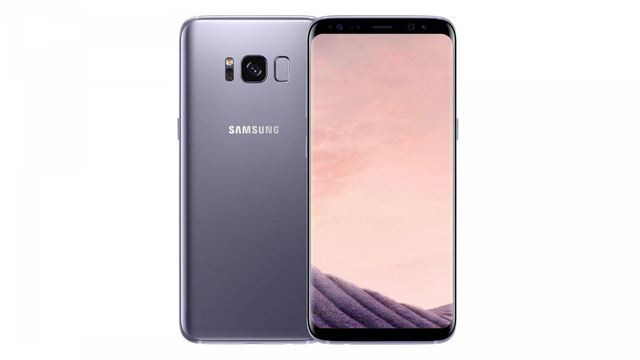
In March 2017, the Galaxy S8 Series was launched. The base model maintained a 3000mAh battery, while the S8+ was upgraded to 3500mAh. Both models supported 15W fast charging. It's worth noting that this marked the first time that Samsung included a USB-C charging port, a significant leap ahead of Apple by six years.
Dual Cameras - Galaxy S9 Series
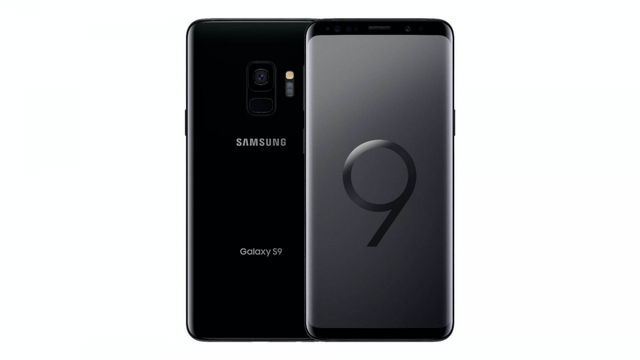
The following year, the Galaxy S9 Series, compared to the S8 Series, didn't see substantial overall upgrades, particularly in terms of charging, which remained at 15W. Even the battery capacities of both models remained unchanged.
Hole-Punch Display - Galaxy S10 Series
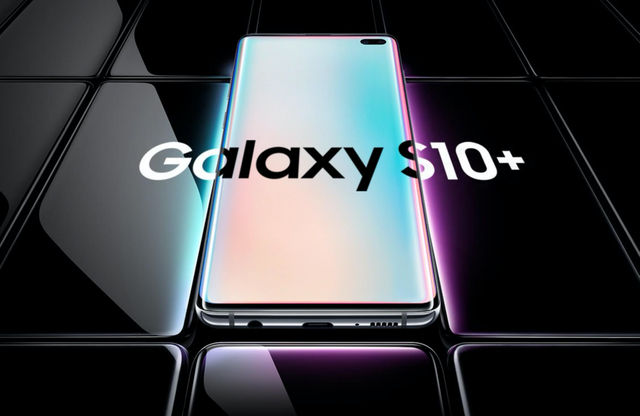
In 2019, Samsung introduced three new models in the S10 Series: S10e, S10, and S10+. Their battery capacities were 3100mAh, 3400mAh, and 4100mAh, respectively, all supporting 15W fast charging.
5G and up to 45W Fast Charging - Galaxy S20 Series
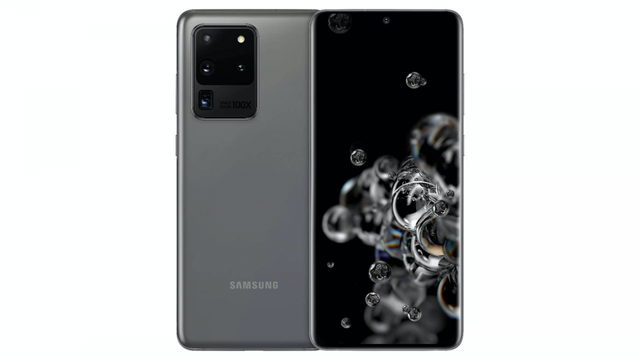
The following year, Samsung abandoned its conventional naming conventions and went straight to the S20 Series. Samsung explained that "we chose Galaxy S20 because we wanted a name that kicks off the next ten years of innovation". The most significant feature of this series was the upgrade to 5G. There were substantial improvements in charging as well. The S20, S20+, and S20 Ultra had battery capacities of 4000mAh, 4500mAh, and 5000mAh, respectively. In terms of charging power, the first two supported 25W, while the latter could be charged at a remarkable 45W. It's important to note that the Ultra model came with a standard 25W charger, and to utilize the 45W charging, an additional purchase was required.
Reduced to 25W - Galaxy S21 Series
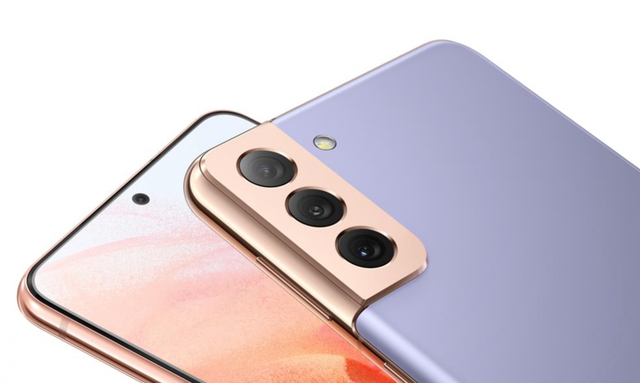
In January 2021, the Samsung S21 Series was released. Only the S21+ saw an increase in battery capacity from the previous generation, reaching 4800mAh. Interestingly, the charging power of the ultra model regressed to 25W in this generation. Additionally, following in Apple's footsteps, no models in this series included a power adapter.
Slight Improvement - Galaxy S22 Series
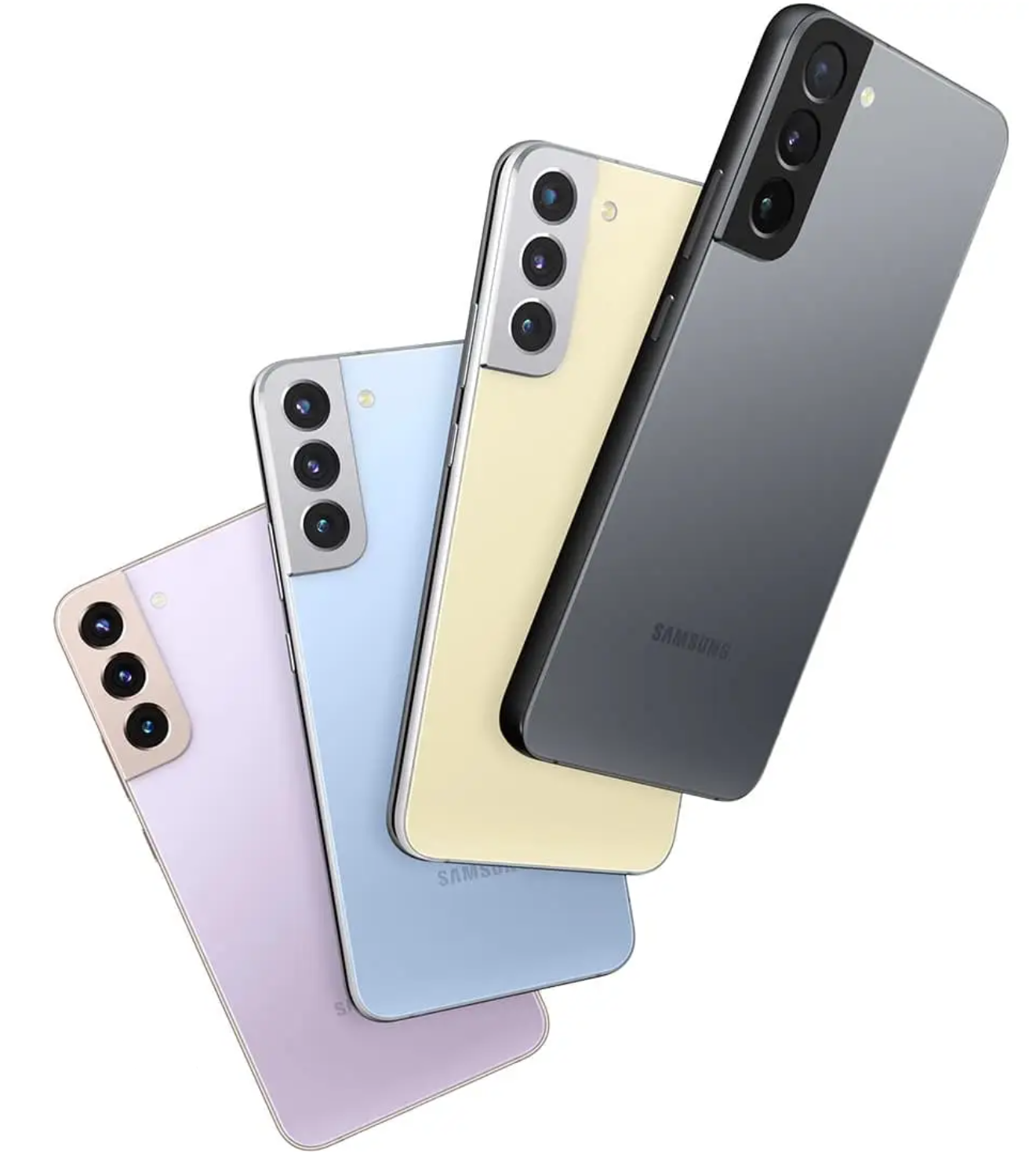
In this generation, the ultra model's battery capacity remained the same, while the S22 and S22+ saw reductions to 3700mAh and 4500mAh, respectively. However, the ultra model reintroduced the 45W charging power.
Environmentally Friendly - Galaxy S23 Series
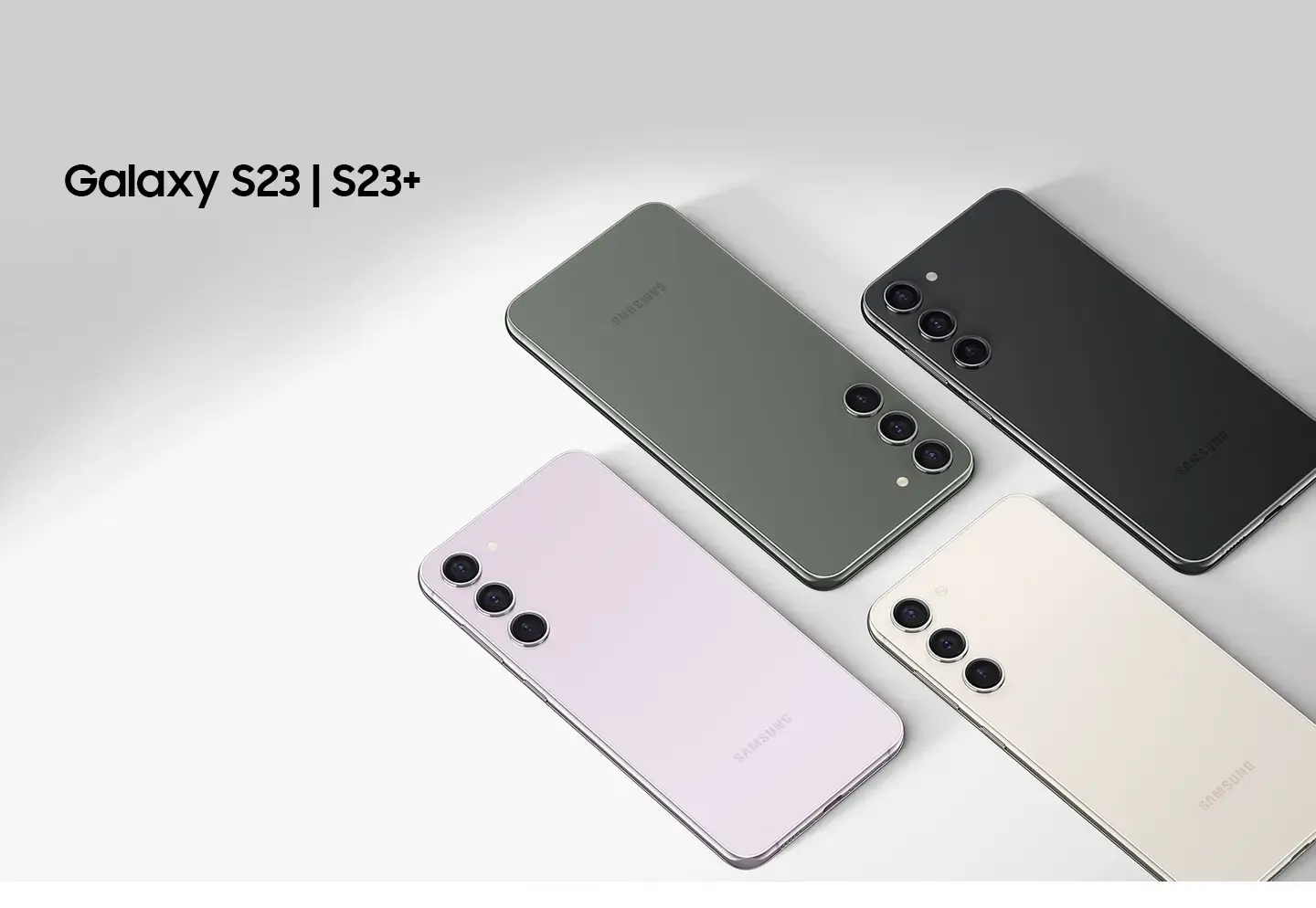
The Samsung Galaxy S23 Series is currently the most environmentally friendly among Samsung's Galaxy lineup, featuring the highest use of recycled materials. In this series, the S23+ also saw an upgrade to 45W charging. In terms of batteries, the Galaxy S23 featured a 3900mAh battery, the Galaxy S23+ had a 4700mAh battery, and the Ultra model remained unchanged.
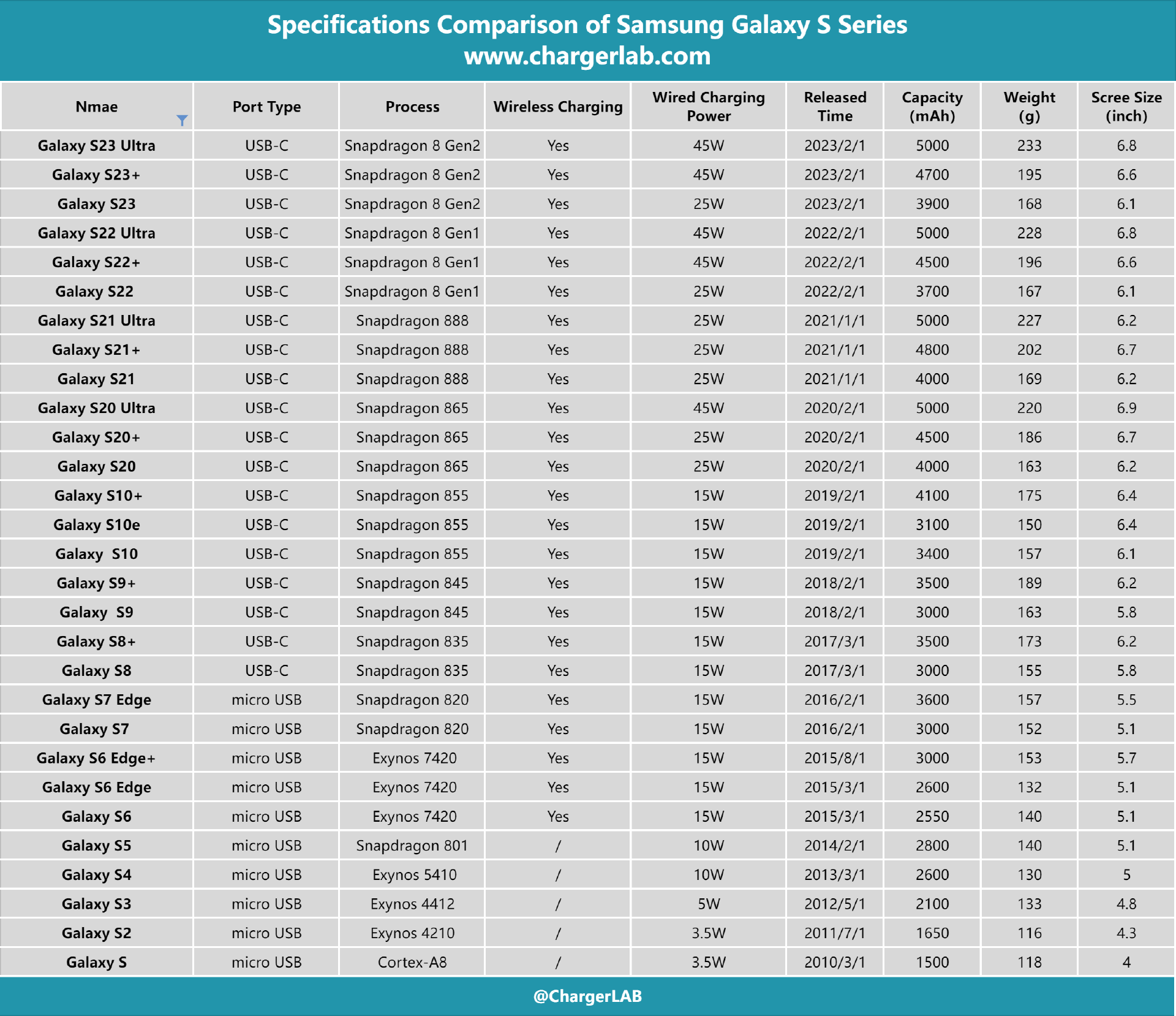
The above chart summarizes the key specs of the Samsung Galaxy S series. Clearly, as time goes by, mobile phone chips become more powerful, and features become richer. This not only increases power consumption but also makes more people rely on their phones, which naturally leads to larger batteries. As early as February 2020, the Galaxy S20 series introduced a substantial 5000mAh battery, which remains the largest battery capacity in the Galaxy S series to date.
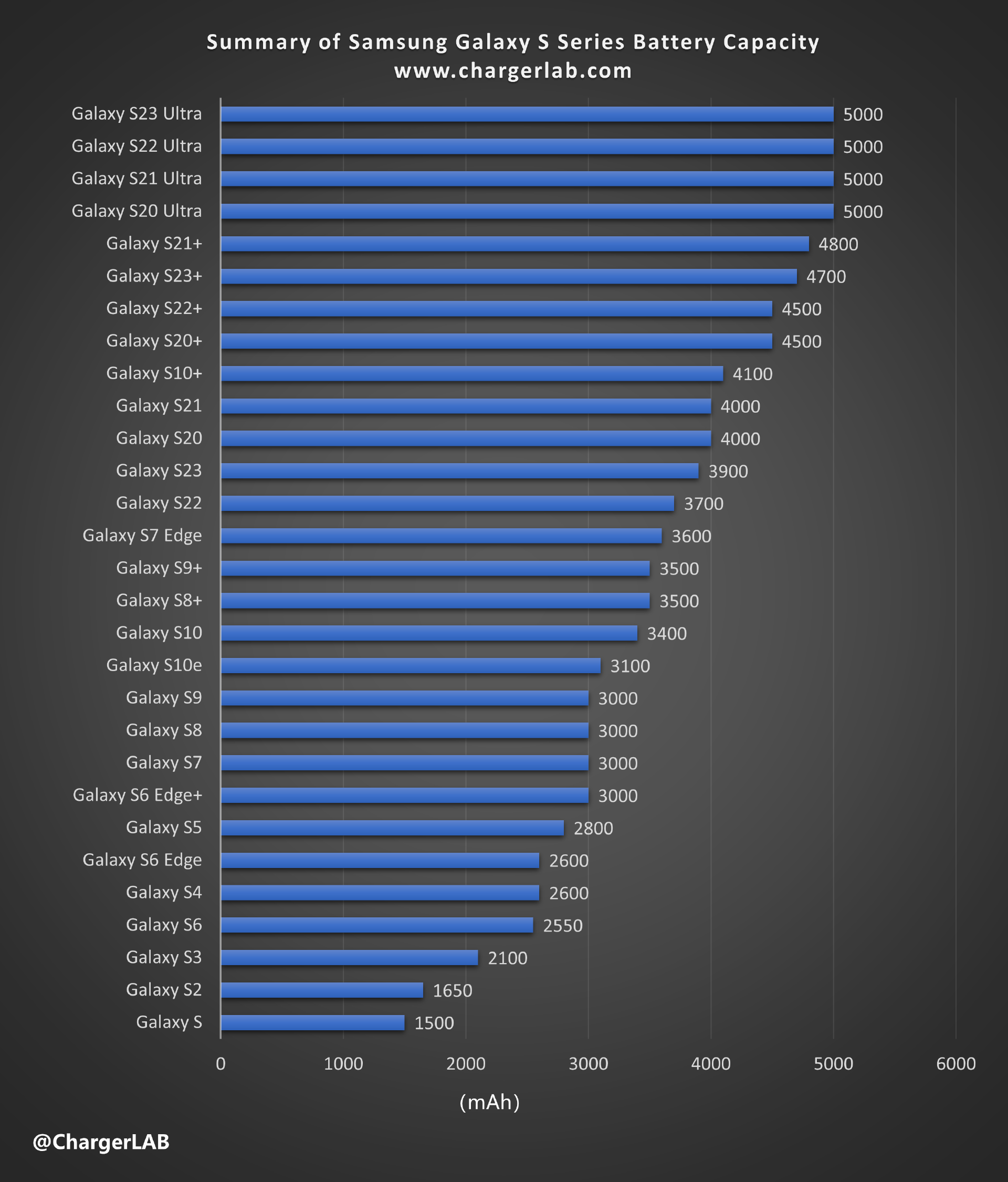
We have also ranked the battery capacities of all models for your convenience. You can see that the Galaxy S series' largest battery capacity is 5000mAh, found in the Galaxy S Ultra model, which is a whopping 3500mAh larger than the original Galaxy S.
Furthermore, over the course of more than a decade of development, the capacities of the 29 different models mentioned were entirely sufficient for their respective times. However, it's important to keep in mind that these capacities should only be considered for analysis and reference, as they may not directly compare with today's standards.
Summary of ChargerLAB
The variation in battery capacities within the Samsung Galaxy S series reflects a broader trend in the current smartphone market. To meet consumers' demands for longer battery life, an increasing number of smartphone brands are introducing high-capacity battery phones. This trend is not limited to the Samsung Galaxy S series; it's evident in other smartphone brands as well.
It's worth noting that while high-capacity battery phones dominate the Galaxy S series, it doesn't imply that there's no market for lower-capacity battery phones. For example, in the past two years, Samsung released the Galaxy S22 and Galaxy S23 with batteries below 4000mAh. Some users may prefer lighter and more portable phones and may not require extensive battery life. By appropriately enhancing the charging speed on these phones, manufacturers can cater to a wider range of user preferences and buying needs.
Related Articles:
1. From iPhone 2G to iPhone 15 Pro Max: A Battery Journey
2. Maximizing Your Samsung Phones with DeX: Connecting to TV/Monitor Made Easy
3. Up to 45W | Charging Review of Samsung Galaxy S23+

